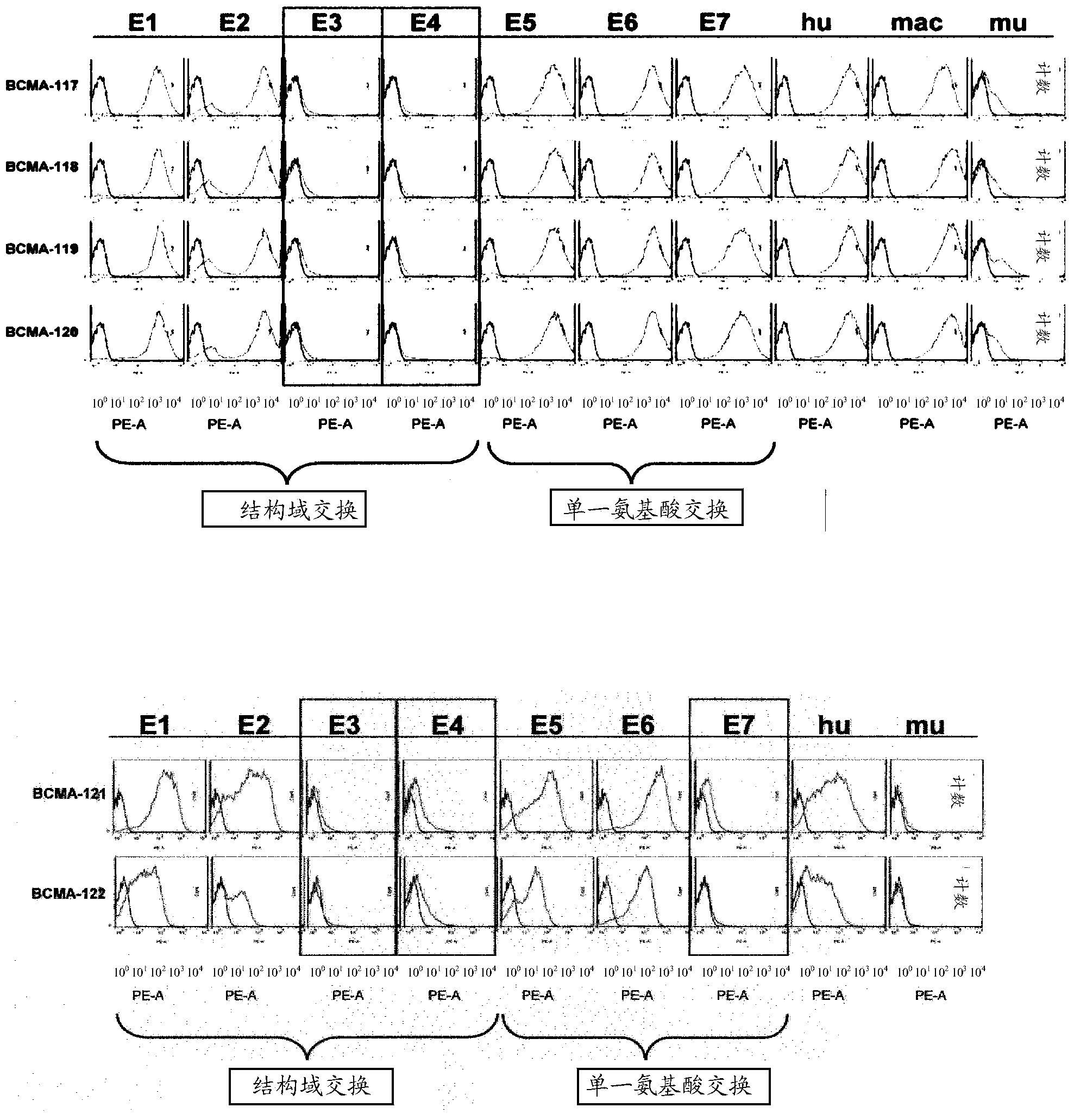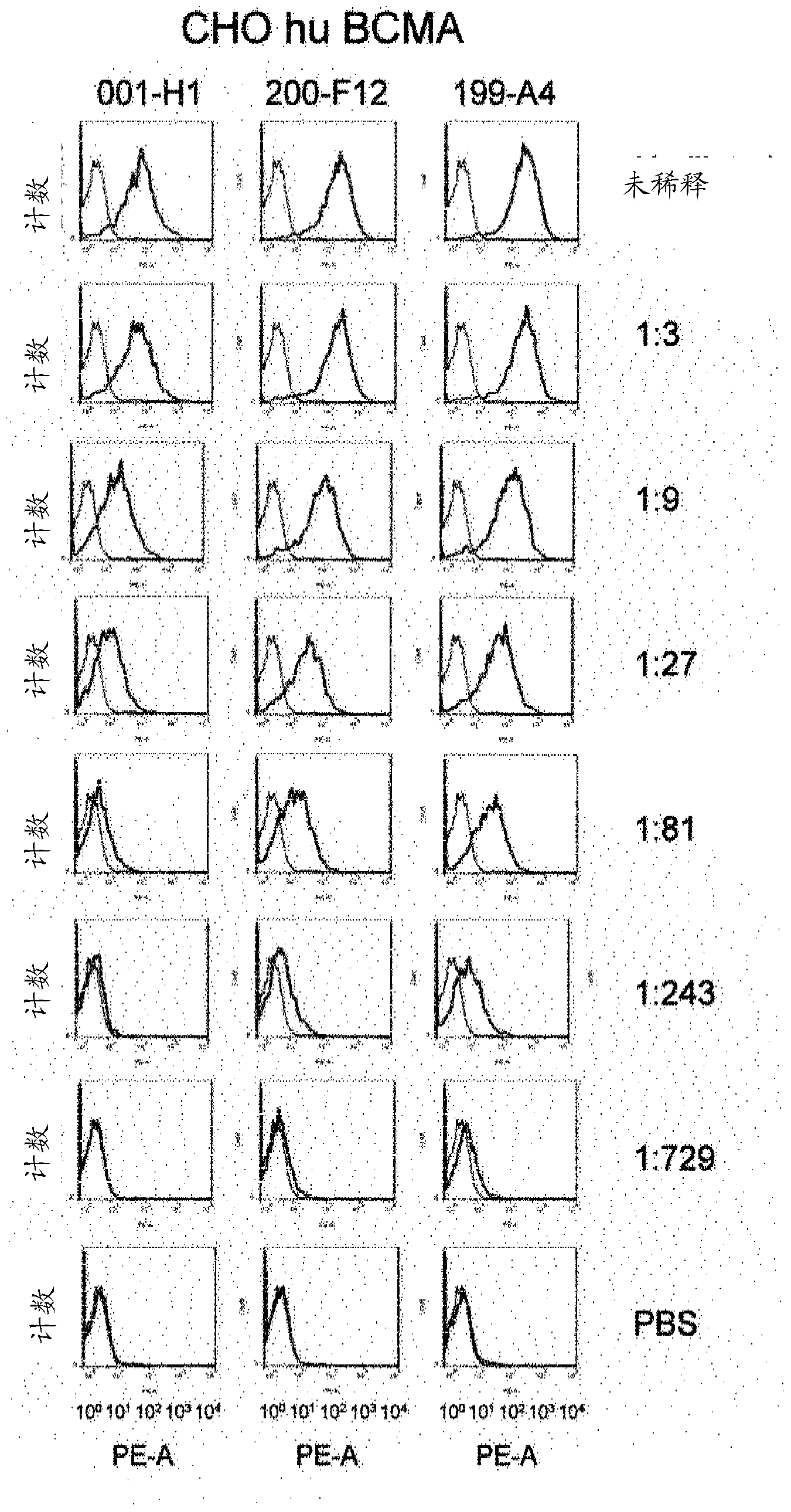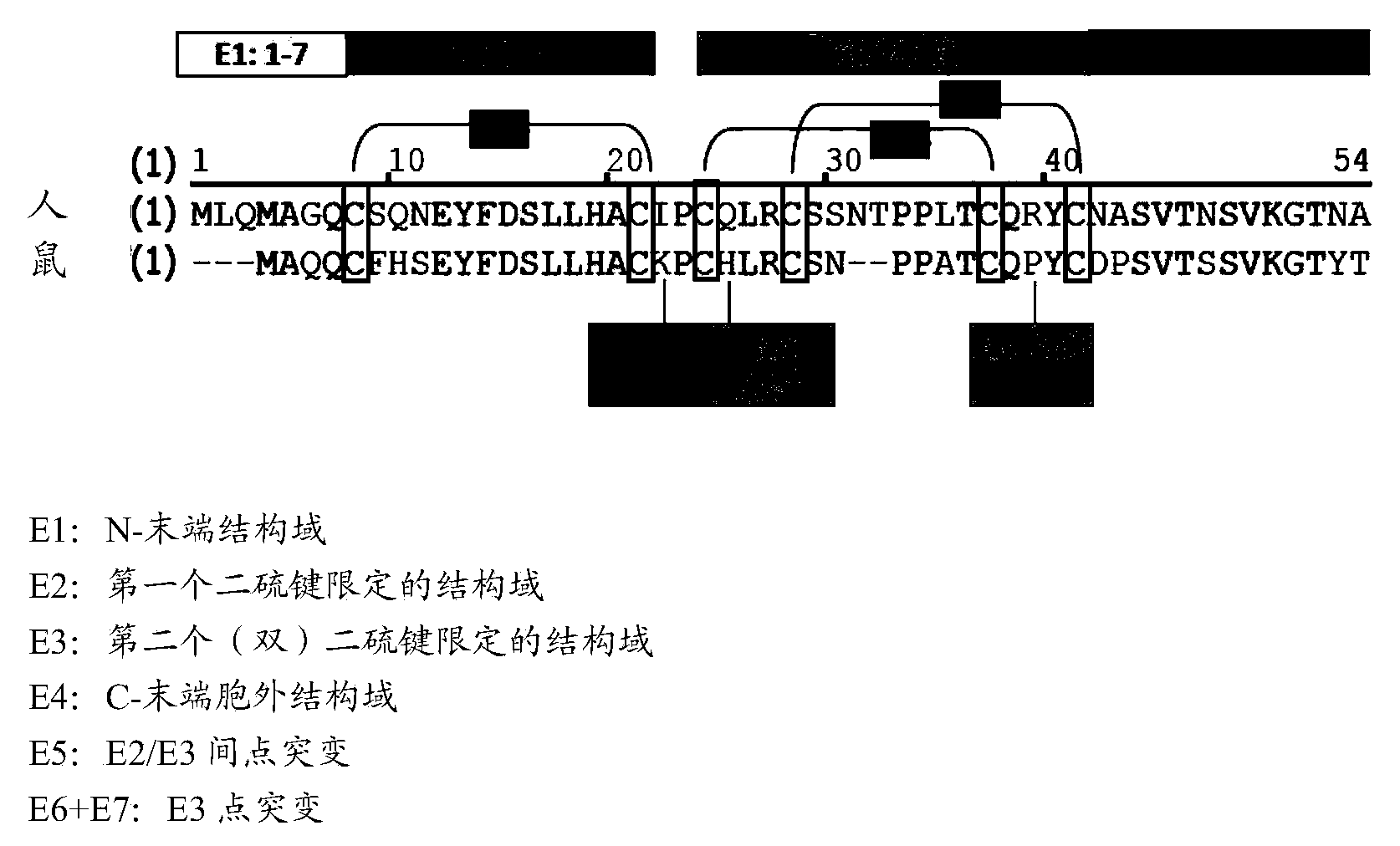Binding molecules for BCMA and CD3
A technology that combines molecules and CDR-L3, which is applied in the direction of peptides containing affinity tags, drug combinations, fusion peptides, etc., and can solve the problems of non-use and rarely achieve complete remission
- Summary
- Abstract
- Description
- Claims
- Application Information
AI Technical Summary
Problems solved by technology
Method used
Image
Examples
Embodiment A1
[0590] Example A1 Generation of CHO cells expressing chimeric BCMA
[0591] In order to construct a chimeric epitope mapping molecule, the amino acid sequence or single amino acid residue of the corresponding epitope domain of human BCMA was replaced with the mouse sequence. Build the following molecules:
[0592] ●Human BCMA ECD / E1 mouse (SEQ ID NO: 1009)
[0593] Chimeric extracellular BCMA domain: human extracellular BCMA domain in which epitope cluster 1 (amino acid residues 1-7 of SEQ ID NO: 1002 or 1007) is replaced by the corresponding murine cluster (SEQ ID NO: 1004 or 1008 Amino acid residues 1-4) replacement
[0594] → Deletion of amino acid residues 1-3 and G6Q mutation in SEQ ID NO: 1002 or 1007
[0595] ●Human BCMA ECD / E2 mouse (SEQ ID NO: 1010)
[0596] Chimeric extracellular BCMA domain: human extracellular BCMA domain in which epitope cluster 2 (amino acid residues 8-21 of SEQ ID NO: 1002 or 1007) is replaced by the corresponding murine cluster (SEQ ID NO...
Embodiment A2
[0618] 2.1 Transient expression in HEK293 cells
[0619] Clones of expression plasmids with sequence-verified nucleotide sequences were used for transfection and protein expression in the FreeStyle293 expression system (Invitrogen GmbH, Karlsruhe, Germany) according to the manufacturer's instructions. A supernatant containing expressed protein was obtained, cells were removed by centrifugation and the supernatant was stored at -20°C.
[0620] 2.2 Stable expression in CHO cells
[0621] Clones of expression plasmids with nucleotide sequences of verified sequences were transfected into DHFR-deficient CHO cells for eukaryotic expression constructs. Eukaryotic protein expression in DHFR-deficient CHO cells was performed as described in Kaufman R.J. (1990) Methods Enzymol. 185, 537-566. Gene amplification of the constructs was induced by increasing concentrations of methotrexate (MTX) up to a final concentration of 2OnM MTX. After two passages of static culture, cells were grown...
Embodiment A3
[0628] Example A3 Epitope clustering of murine scFv-fragments
[0629] Cells transfected with human or murine BCMA, or with chimeric BCMA molecules, were stained with native, undiluted periplasmic extracts containing scFv bound to human / cynomolgus BCMA. Bound scFv was detected using 1 μg / ml anti-FLAG antibody (Sigma F1804) and R-PE-labeled anti-mouse Fcγ-specific antibody (1:100; Dianova #115-116-071). All antibodies were diluted in PBS with 2% FCS. As a negative control, cells were incubated with PBS / 2% FCS instead of periplasmic extract. Samples were measured by flow cytometry on a FACSCanto II instrument (Becton Dickinson) and analyzed with FlowJo software (version 7.6).
PUM
| Property | Measurement | Unit |
|---|---|---|
| melting point | aaaaa | aaaaa |
| diameter | aaaaa | aaaaa |
Abstract
Description
Claims
Application Information
 Login to View More
Login to View More - R&D
- Intellectual Property
- Life Sciences
- Materials
- Tech Scout
- Unparalleled Data Quality
- Higher Quality Content
- 60% Fewer Hallucinations
Browse by: Latest US Patents, China's latest patents, Technical Efficacy Thesaurus, Application Domain, Technology Topic, Popular Technical Reports.
© 2025 PatSnap. All rights reserved.Legal|Privacy policy|Modern Slavery Act Transparency Statement|Sitemap|About US| Contact US: help@patsnap.com



